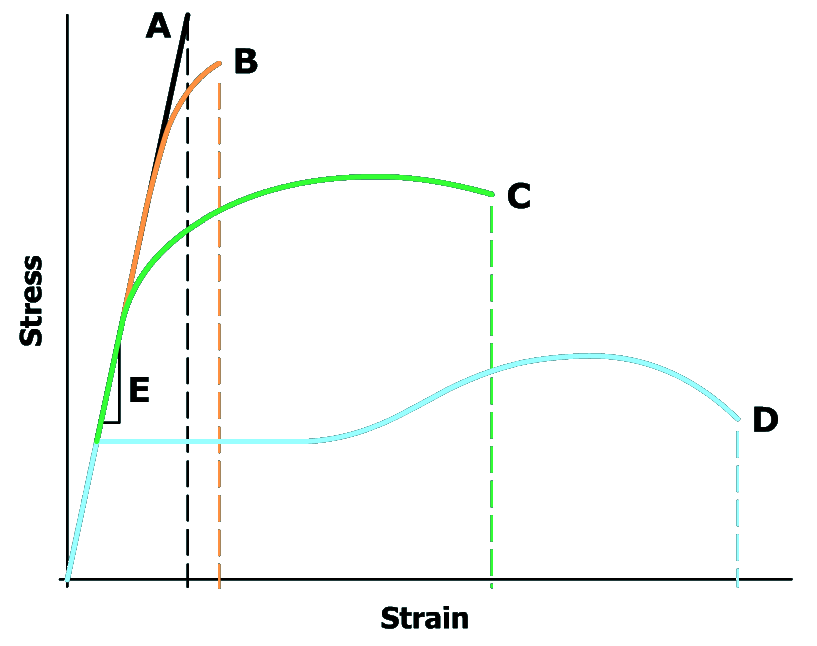
Often, there is a trade-off between strength and ductility. In this figure, stress-strain curves for four different types of steel are compared. All four curves branch from the same elastic modulus line; therefore, each of the steels has the same stiffness.
The steels range from a brittle steel to a ductile steel .
Steel represents is a hard tool steel, which exhibits no plastic deformation before fracture.
Steel is typical of a low-carbon steel, which exhibits extensive plastic deformation before fracture.